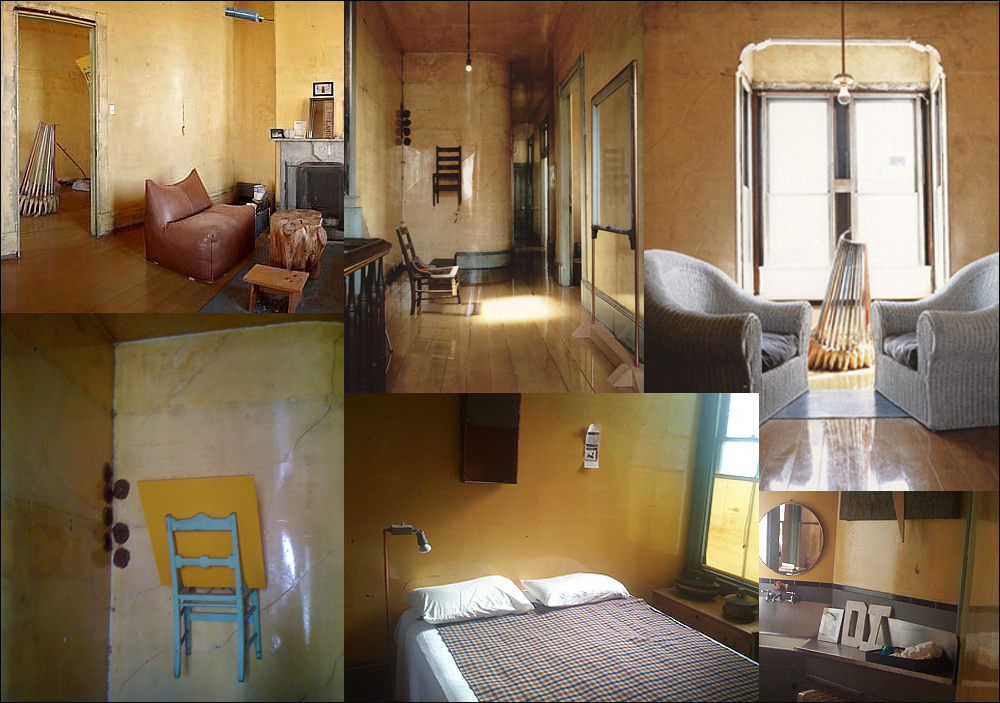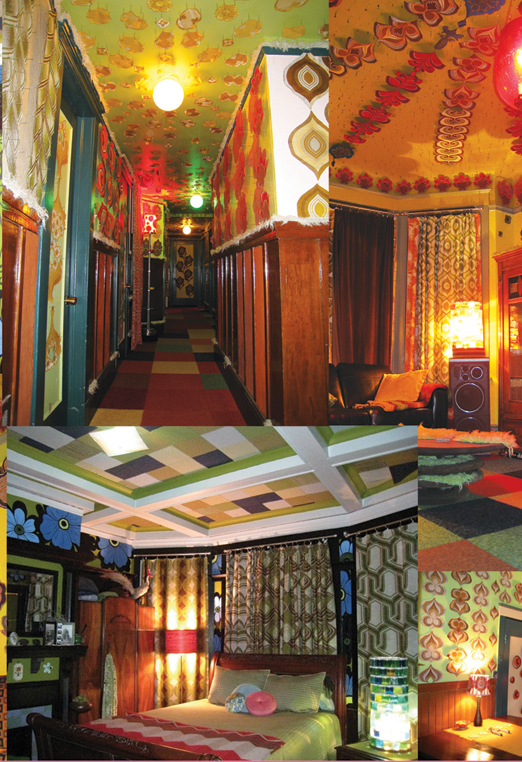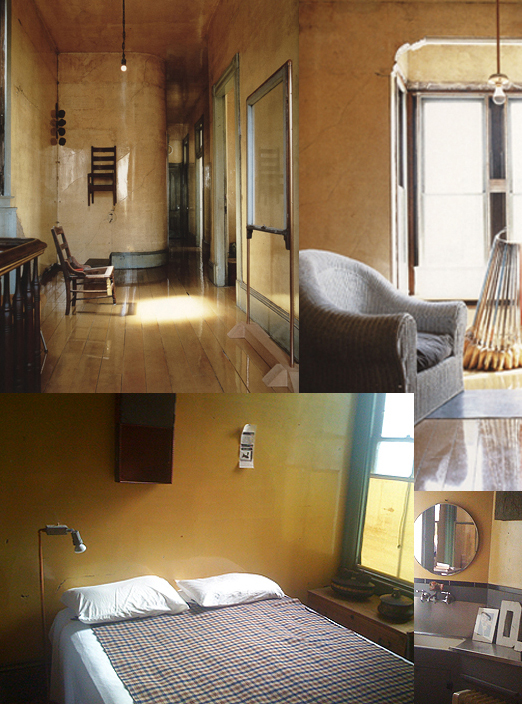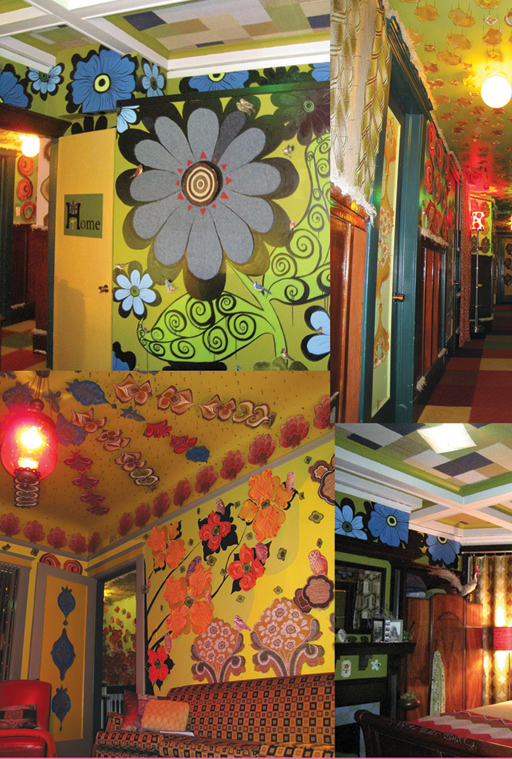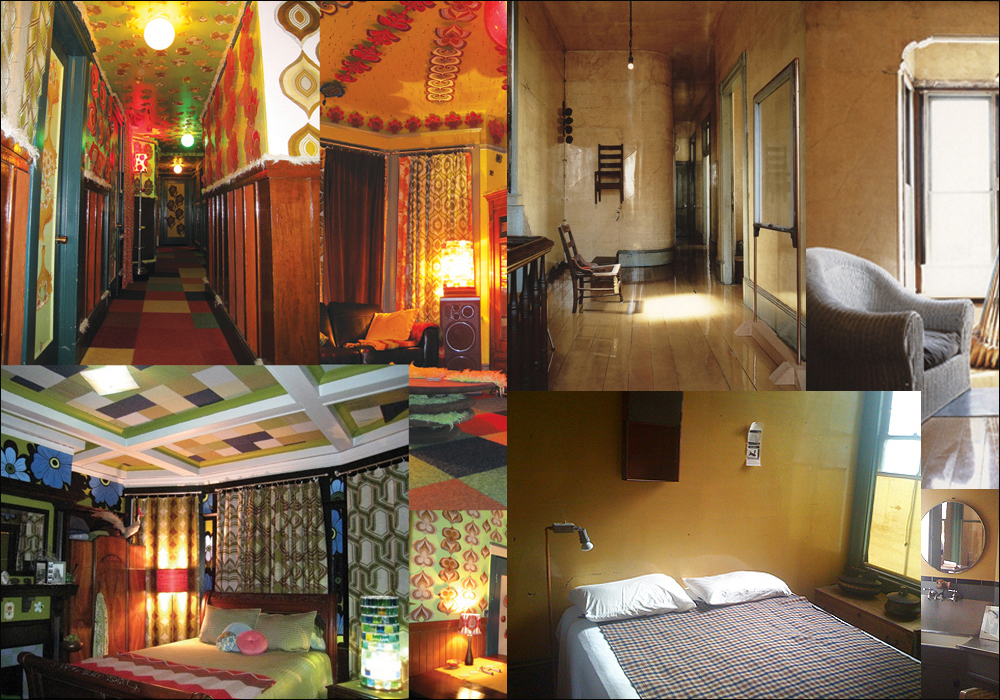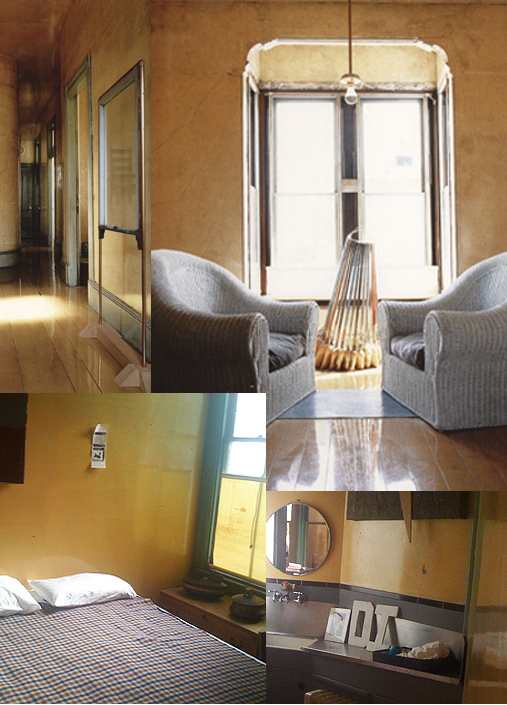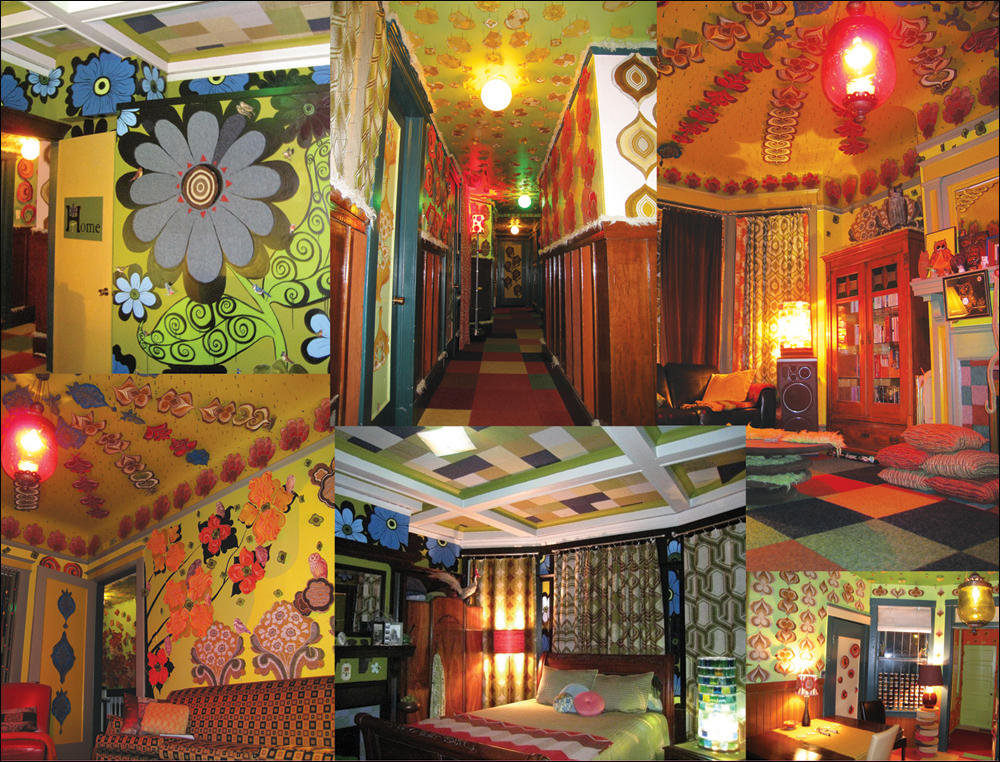Tribute To David Ireland
On September 14, 2009 SFMoMA hosted a special memorial service honoring Bay Area sculptor and conceptual artist David Ireland, who passed away in spring 2009. In conjunction with the memorial Scott Hewicker curated a collection of contributions from younger artists. Wilson was one of the artist invited to honor Ireland.
David Ireland: 500 Capp Street
Megan Wilson: Home 1996 - 2008
Home 1996 – 2008 was a site-specific installation/environment that utilized the interior space of my home to explore and challenge notions of comfort and protection, private and public, and the boundaries between art/life/architecture/design.
David Ireland’s home at 500 Capp Street was one of the inspirations for Home 1996 – 2008. I loved how David integrated his work so directly into his everyday life and living environment. While our aesthetic choices are at opposite extremes, it seems we both have the same intent: to challenge the definition of what constitutes as “art” and use materials and practices that aren’t necessarily popular or accepted by the standards of the art world. We both also address beauty in our work – David removed any hint of ornamentation; and I push it to the edge of becoming almost grotesque.
I’m very grateful to David for the different perspective and the delight he provided in experiencing life and art. His work lives on in the work of those of us he inspired.
David Ireland, collage of images from 500 Capp Street; Original photographs Copyright ©1986 Abe Frajndlich.
Megan Wilson, collage of images from Home, 1996-2008; photographs copyright ©2008 Eliza Barrios
Scott Hewicker:
My home, my work, my artistic and musical practices —essentially my whole life—co-exist on a steady fault line between David Ireland’s two Capp Street houses in San Francisco’s Mission District. 65 Capp Street was the site of the first Capp Street Project, and 500 Capp St, Ireland’s former home and studio, is now also, to my mind, his greatest lasting artwork. The two houses seem at times like two footprints of a standing giant, and he was a giant to me and to many. Fearlessly beginning his career late in life, David’s essential concern was the Zen-like observance of, and dedication to, the ever-lasting present. Using common, readily available materials such as concrete, found wood, and other debris, with the lightest of touch. David could make dirt sing, rewarding our acceptance of his work, but never asking for it. “You can’t make art by making art”, he often said, and you can see in some of the contributions below how many artists have taken that simple but profound idea to heart. I didn’t know him well, but his work and the ideas inherent in their making have always deeply resonated with me, as with others. David’s refusal of personal attachment to the works he made gave me the courage when I left art school to discard all my old work and start over again from scratch.
His passing last May, though expected for a long time, nevertheless struck slow and deep. I was surprised by what seemed to me a muted media response, or in the case of the art world outside the Bay Area, what felt like too little response at all. I never considered David Ireland “just” a San Francisco or West Coast artist. We were lucky to have him here and lucky he wanted to be here, and his ideas and creative spirit seem embedded in the foundation of a working artists’ community here. From spontaneous street sculpture to DIY art spaces, David helped you appreciate the beauty inherent in everyday things, and in happenings outside the sphere of marketable art. News of his death I thought should have rung out through the streets like the death of Victor Hugo in Paris. He touched so many people, so many artists.
I see echoes of David Ireland’s work in many artists, and wondered what it would look like to ask a cross-section of people here, or who used to be here, to select a work of David’s and a work of their own to engage in a kind of visual interplay that reflects how they’ve felt David’s impact on their own work or lives. Some have also contributed memories and personal insights. A tribute like this one couldn’t begin to be representative of everyone Ireland touched. I hope we can take this tiny part to indicate a much greater whole.




